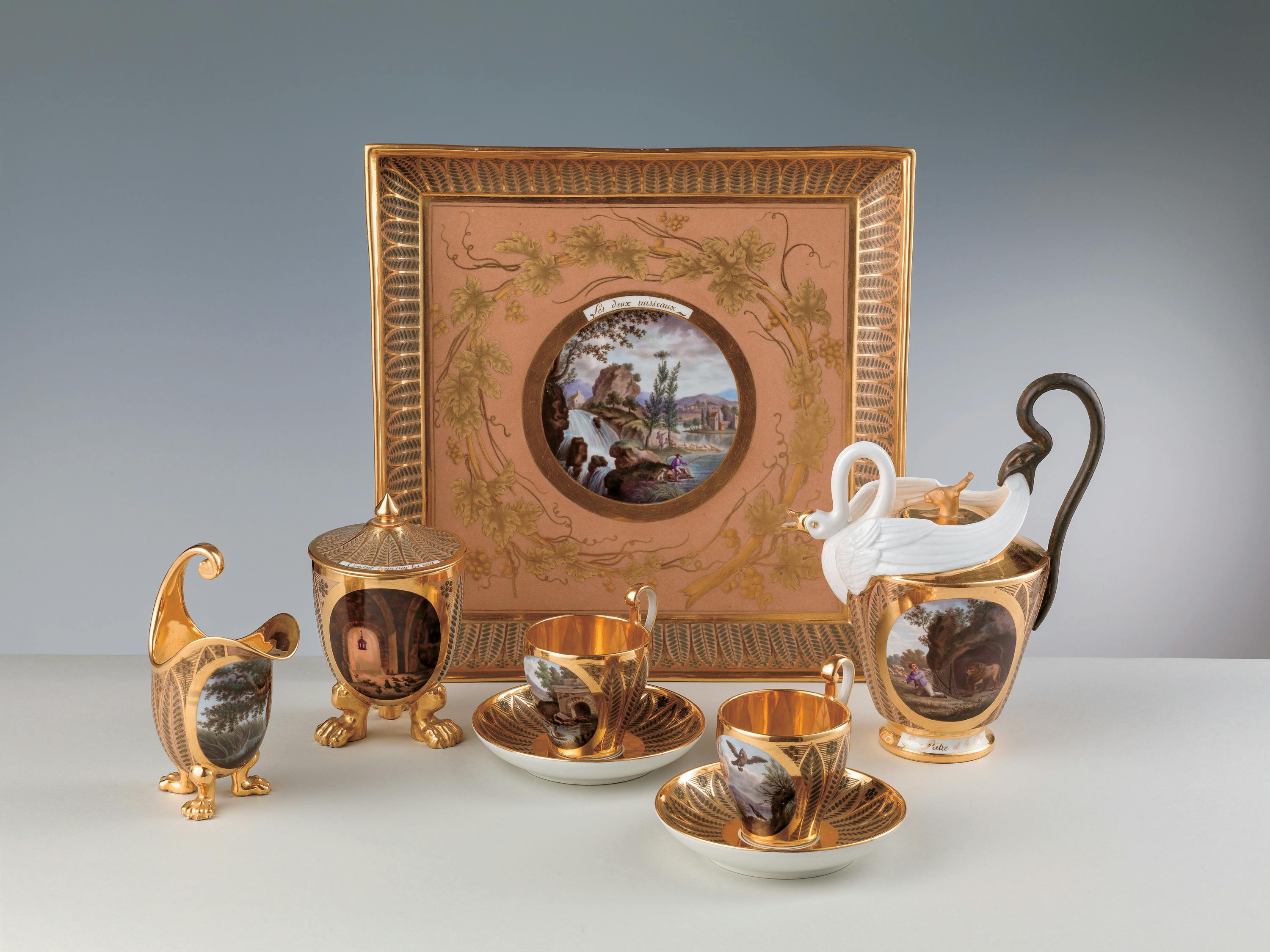Coffee service
Dagoty Factory, Paris; Ginori Factory, Doccia (restocking)
Mark “Manufacture de / SM l'Impératrice / Dagoty / à Paris”, in red (under a cup); "Manufacture / P.L. Dagoty / à Paris”, in red (under the milk jug); six-pointed star, in gold (under the sugar bowl)
Inscription "Le Pâtre et le Lion" (coffee pot); "Le Chêne et le Rouse" (milk jug); "Conseil tenu par les Rats" (sugar bowl); "Le corneille et l'aigle", "Les Poissons et le Cormoran" (cups); "Les deux ruisseaux" (tray)
This curiously shaped tête-a-tête service was probably commissioned by Elisa Baciocchi from Dagoty's Factory after her visit in 1810. On that occasion, the Grand Duchess had ordered two services for the Villa di Marlia in Lucca, with the dessert service being preserved in the Pitti Palace (inv. A.c.e. 1911, nos. 804, 997-999).
This service is characterised by strong eclecticism: the milk jug and sugar bowl have three lion's paws as their feet; the coffee pot has a swan at the top - from whose beak the drink comes out - gripped at the back by a snake that acts as a loop. The swan/serpent section encloses the lid with the knob moulded in the shape of a deer head. Gold entirely covers the elements that make up the service, with a decorative motif of lance-shaped leaves. The use of the noble metal points us towards a royal patronage, as do the refined miniatures that characterise them. They are taken from the engravings of Jean de La Fontaine 's Fables, with the exception of Le corneille et l'aigle which can be traced back to a fable by Aesop, the scene of which is derived, as is that of Les deux ruisseaux, albeit with variations, from the plates in the first volume of Planches pour: Dorat. Œuvres complètes (1st edition 1764, 2nd edition 1777) designed by Clément-Pierre Marillier and engraved by Yves-Marie Le Gouaz.
Dagoty Factory was founded at the end of the 18th century by three brothers at Boulevard Poissonnière. Pierre-Louis Dagoty, who had survived Isidore and Jean Baptiste Etienne, continued the business alone from 1801 onwards and at the Industrial Exhibition in Paris in 1806 he was awarded a silver medal and imperial protection, after which his factory took the name "Manufacture de S. M. Impériale." This factory produced a tea service made of porcelain treated with the biscuit process on the outer surface and gilded on the inner surface, which is currently preserved in the Porcelain Museum (inv. A.c.e. 1911, nos. 1027-1032). Its patronage is not known, but the milk jug features a swan similar to the one that adorns our coffee pot, a detail that leads us back to the Grand Duchess, as it features prominently in the decoration of Sèvres porcelain donated to her by her brother, such as the sumptuous entrée and dessert service and the pair of Cordelier vases, now in the collections of Pitti Palace (inv. O.d.A. 1911, nos. 928-929).
